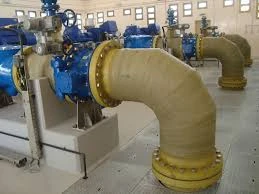
-
 Afrikaans
Afrikaans -
 Albanian
Albanian -
 Amharic
Amharic -
 Arabic
Arabic -
 Armenian
Armenian -
 Azerbaijani
Azerbaijani -
 Basque
Basque -
 Belarusian
Belarusian -
 Bengali
Bengali -
 Bosnian
Bosnian -
 Bulgarian
Bulgarian -
 Catalan
Catalan -
 Cebuano
Cebuano -
 China
China -
 China (Taiwan)
China (Taiwan) -
 Corsican
Corsican -
 Croatian
Croatian -
 Czech
Czech -
 Danish
Danish -
 Dutch
Dutch -
 English
English -
 Esperanto
Esperanto -
 Estonian
Estonian -
 Finnish
Finnish -
 French
French -
 Frisian
Frisian -
 Galician
Galician -
 Georgian
Georgian -
 German
German -
 Greek
Greek -
 Gujarati
Gujarati -
 Haitian Creole
Haitian Creole -
 hausa
hausa -
 hawaiian
hawaiian -
 Hebrew
Hebrew -
 Hindi
Hindi -
 Miao
Miao -
 Hungarian
Hungarian -
 Icelandic
Icelandic -
 igbo
igbo -
 Indonesian
Indonesian -
 irish
irish -
 Italian
Italian -
 Japanese
Japanese -
 Javanese
Javanese -
 Kannada
Kannada -
 kazakh
kazakh -
 Khmer
Khmer -
 Rwandese
Rwandese -
 Korean
Korean -
 Kurdish
Kurdish -
 Kyrgyz
Kyrgyz -
 Lao
Lao -
 Latin
Latin -
 Latvian
Latvian -
 Lithuanian
Lithuanian -
 Luxembourgish
Luxembourgish -
 Macedonian
Macedonian -
 Malgashi
Malgashi -
 Malay
Malay -
 Malayalam
Malayalam -
 Maltese
Maltese -
 Maori
Maori -
 Marathi
Marathi -
 Mongolian
Mongolian -
 Myanmar
Myanmar -
 Nepali
Nepali -
 Norwegian
Norwegian -
 Norwegian
Norwegian -
 Occitan
Occitan -
 Pashto
Pashto -
 Persian
Persian -
 Polish
Polish -
 Portuguese
Portuguese -
 Punjabi
Punjabi -
 Romanian
Romanian -
 Russian
Russian -
 Samoan
Samoan -
 Scottish Gaelic
Scottish Gaelic -
 Serbian
Serbian -
 Sesotho
Sesotho -
 Shona
Shona -
 Sindhi
Sindhi -
 Sinhala
Sinhala -
 Slovak
Slovak -
 Slovenian
Slovenian -
 Somali
Somali -
 Spanish
Spanish -
 Sundanese
Sundanese -
 Swahili
Swahili -
 Swedish
Swedish -
 Tagalog
Tagalog -
 Tajik
Tajik -
 Tamil
Tamil -
 Tatar
Tatar -
 Telugu
Telugu -
 Thai
Thai -
 Turkish
Turkish -
 Turkmen
Turkmen -
 Ukrainian
Ukrainian -
 Urdu
Urdu -
 Uighur
Uighur -
 Uzbek
Uzbek -
 Vietnamese
Vietnamese -
 Welsh
Welsh -
 Bantu
Bantu -
 Yiddish
Yiddish -
 Yoruba
Yoruba -
 Zulu
Zulu
frp products for thermal and nuclear power
FRP Products for Thermal and Nuclear Power Applications
Fiber Reinforced Plastics (FRP) have established themselves as essential materials in the thermal and nuclear power industries due to their unique combination of mechanical strength, durability, and resistance to extreme environmental conditions. The increasing demand for sustainable energy solutions and the need for effective corrosion-resistant materials make FRP products ideal for various applications in these sectors.
FRP Products for Thermal and Nuclear Power Applications
In thermal power plants, FRP products are commonly used for piping systems, tanks, and cooling towers. The use of FRP in these applications ensures that water and steam transfer systems remain intact, minimizing the risk of leaks and failures. Additionally, the lightweight nature of FRP materials makes them easier to handle and install, leading to reduced labor costs and quicker project completion times. Moreover, the high thermal insulation properties of FRP help maintain optimal temperatures in various equipment, ensuring efficient energy production.
frp products for thermal and nuclear power

In the context of nuclear power, FRP products play a crucial role in the construction of containment structures and shielding systems. The ability of FRP to resist radiological degradation and withstand high levels of radiation makes it an ideal choice for protective barriers. Furthermore, its non-conductive properties enhance safety by preventing electrical hazards within sensitive areas of nuclear facilities. As nuclear power plants continue to modernize, the incorporation of advanced FRP technologies is expected to provide enhanced safety and performance.
Another significant aspect of FRP products is their adaptability and customization. Manufacturers can engineer FRP materials to meet specific project requirements, including variable thicknesses, reinforcement patterns, and surface finishes. This capability allows for tailored solutions that can address the unique challenges faced by each power plant. Additionally, the development of fire-resistant FRP formulations has opened new doors for their application in environments where fire safety is a critical concern, further broadening the scope of their use.
Sustainability is also a vital consideration for modern energy systems. As the global push for cleaner energy sources strengthens, the shift towards sustainable materials becomes imperative. FRP products not only contribute to the efficiency and longevity of thermal and nuclear power facilities, but they also play a role in reducing the carbon footprint associated with energy production. By minimizing maintenance needs and enhancing operational efficiencies, FRP contributes to a greener approach in the energy sector.
In summary, FRP products represent a significant innovation in the thermal and nuclear power industries, offering unparalleled corrosion resistance, lightweight construction, and customization options. Their ability to improve safety, enhance efficiency, and support sustainable energy practices positions them as a crucial component of future power generation technologies. As the need for reliable and efficient energy sources continues to grow, the role of FRP in these industries is likely to expand, paving the way for the next generation of energy solutions.









